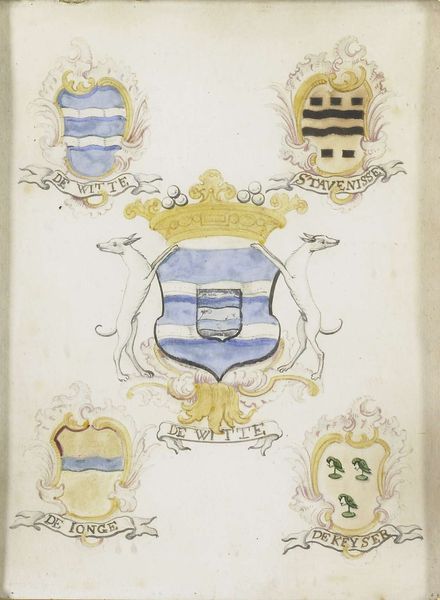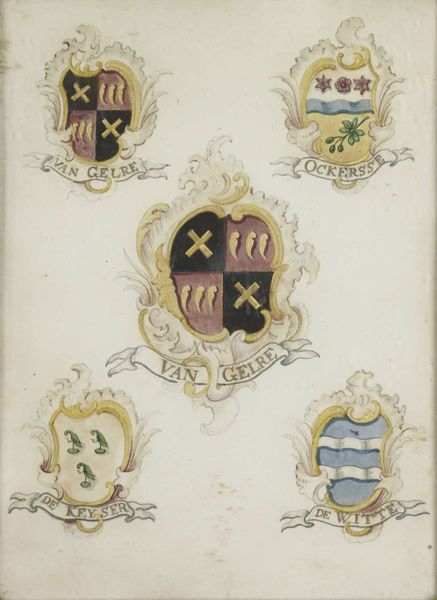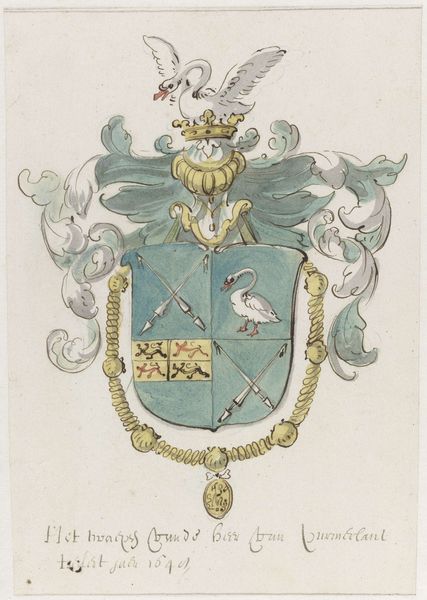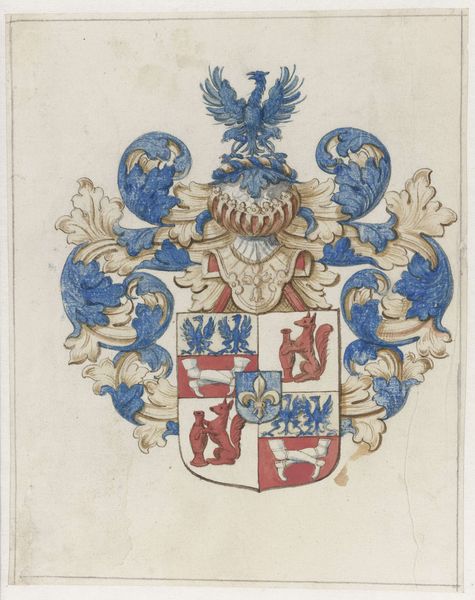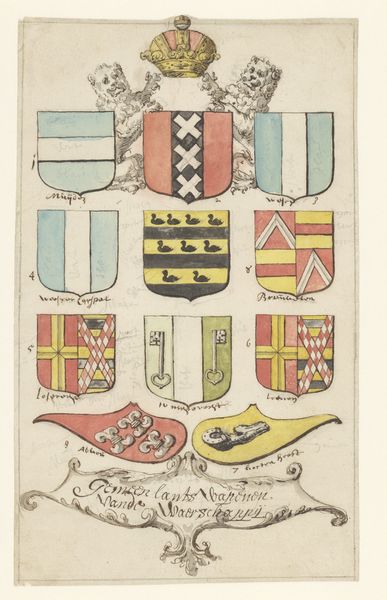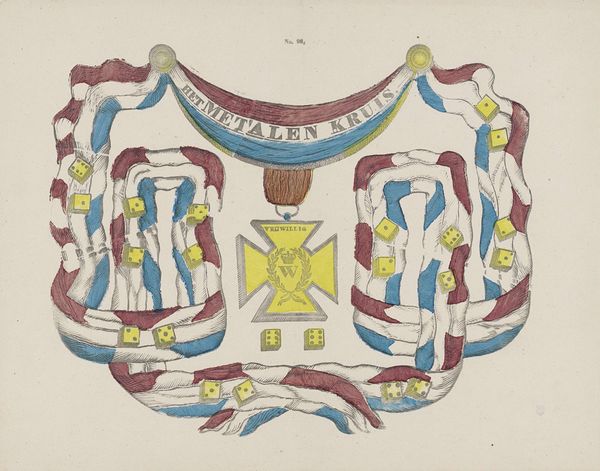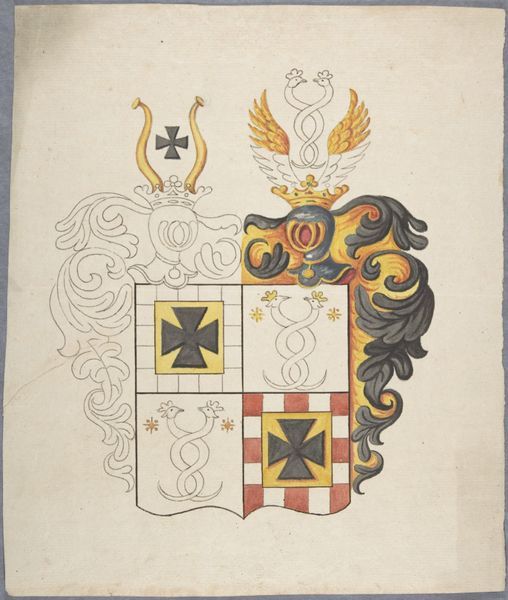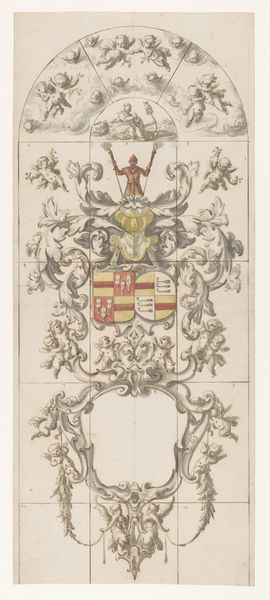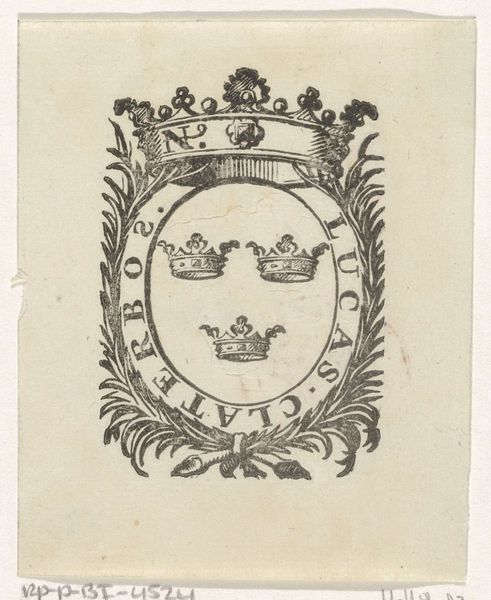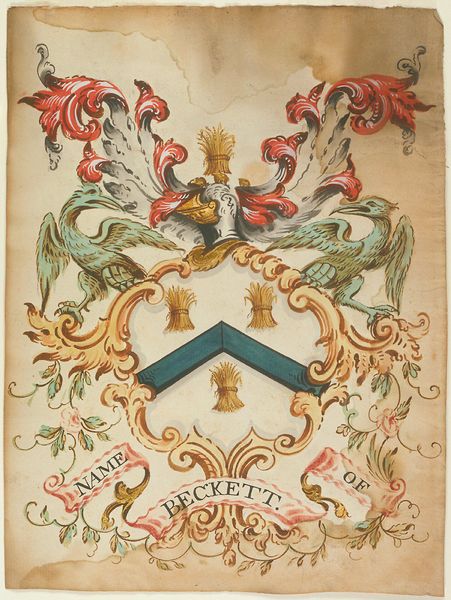
Het wapen van een vrouwelijk lid van de familie Ockersse, gehuwd met van Gelre en moeder van Anna Digna van Gelre, met de wapens van haar vier grootouders 1750 - 1799
0:00
0:00
drawing, watercolor
#
portrait
#
drawing
#
watercolor
#
decorative-art
Dimensions: height 22 cm, width 16.5 cm, depth 3.1 cm
Copyright: Rijks Museum: Open Domain
Curator: Here we have a watercolor drawing from the latter half of the 18th century, titled "The coat of arms of a female member of the Ockersse family, married to van Gelre and mother of Anna Digna van Gelre, with the coats of arms of her four grandparents." It’s attributed to an anonymous artist. Editor: Immediately, it speaks of lineage and the social structures of the time. These coats of arms, almost like curated biographies, remind us how identity was intrinsically linked to ancestry, particularly for women. Curator: Exactly. Looking closely, we can see the deliberate choice of watercolor, offering a delicate yet precise depiction. The careful rendering of each family crest points to the importance of heraldry during this period. Each element, from the stars to the stylized flowers, was meticulously designed. The Ockersse family, placed centrally, dominates the composition. Editor: But it is interesting to consider who commissioned it and why. Perhaps it served as a visual record intended to underscore social standing and marital alliances, a kind of painted family tree designed to be visually consumed and communicated, mostly for the male heirs. What’s the story *not* being told through these symbols of privilege? Curator: It makes you think about the artist as a craftsman rather than an individual genius; one might examine the labor that went into its production: the source and cost of pigments, the tools, and even the artistic training required. And of course, the broader political economy of Europe, the context in which status symbols are worth representing so laboriously. Editor: Indeed. These are powerful reminders that challenge conventional narratives, revealing how art served within a structured societal order to cement historical narratives of class and gender. Curator: Studying it, one could also look into the meaning and symbolism associated with heraldry at that time. What was considered valuable and what was omitted, by that single arm bearing an unfamiliar green vegetation, all must carry some unrecorded context. Editor: It really does prompt one to consider how inherited identities shape and, sometimes, confine women within dynastic ambitions and aristocratic narratives, and how we perceive these roles in contemporary discussions about the construction of social narratives and power. Curator: Looking at it with all these historical details does give a glimpse into the complex network of power dynamics that underpin this artwork. Editor: Absolutely; it's a valuable snapshot of how the social and cultural legacies intertwine, allowing us to connect historical analysis with ongoing discussions around power, gender, and identity in both past and present narratives.
Comments
No comments
Be the first to comment and join the conversation on the ultimate creative platform.
